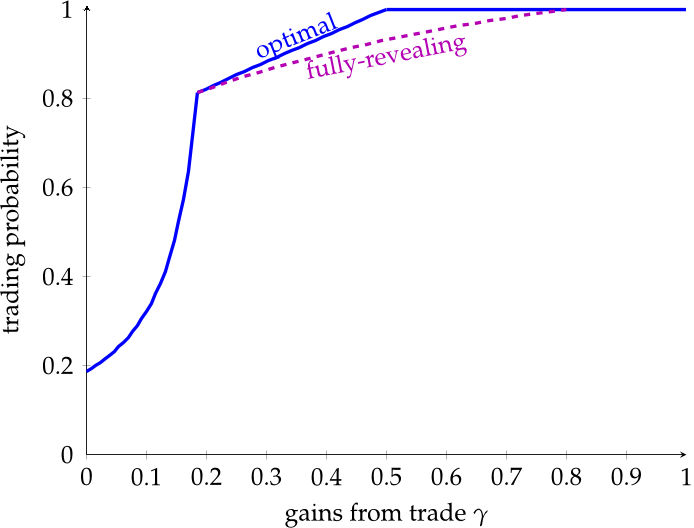Abstract: When a decision rule is implemented using a Bayesian incentive compatible mechanism in which the messages are publicly observable, the players' information is augmented by their observation of each others' strategies. In this paper we study the set of Bayesian implementable decision rules which have the further property that the information conveyed in the process of their implementation does not invalidate the optimality of the players' strategies. We call such rules posterior implementable. We concentrate on a two-person problem with two possible decisions, and, for this problem, we obtain a complete characterization of the set of posterior implementable decision rules. Our main result entails that a posterior implementable social decision rule can take essentially only two values throughout the range of observations of the two players. The domains over which each of these two outcomes is realized can be characterized by the fact that the boundary between them is a step function satisfying a certain set of equations. The motivation for studying posterior implementable rules is that they represent the outcomes of a two-stage cooperative process. In the first stage, communication takes place but no binding commitments can be made. The second stage consists of ratifying ("signing") the agreement obtained at the first stage. At this state, no further information is conveyed. Both parties must be satisfied with the nonbinding commitments obtained at the first stage, so that these actions are actually carried out. Possible applications of this theory are given. A constructive method for finding the posterior implementable rules is presented and the set of such rules is contrasted, in an example, with the full set of Bayesian implementable rules.


